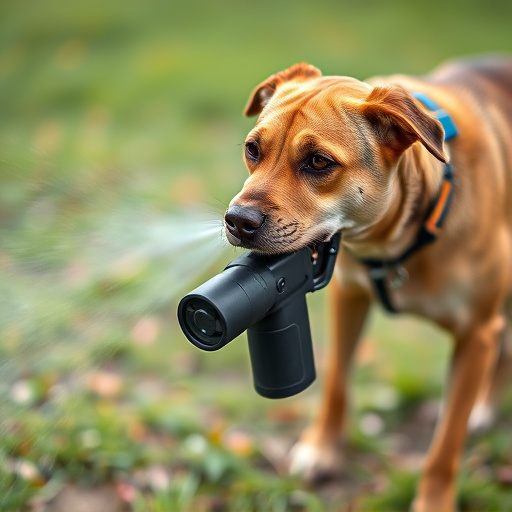Canine pepper spray, utilizing capsaicin from chili peppers, is a non-lethal force option for temporarily incapacitating aggressive dogs. Its legality varies across the US, with some states prohibiting and others allowing law enforcement and citizens to carry it under specific regulations. Training and safety protocols are critical for responsible use by police forces, who prioritize minimizing risks to bystanders and other animals while enhancing canine capabilities. Understanding state-by-state variations in legal carry permissions is crucial for both self-defense and public safety maintenance.
“Unleashing a powerful tool in law enforcement, canine pepper spray—a potent yet precise option against aggressive dogs—is gaining traction across the states. With its legal carry restrictions varying from region to region, this police-grade solution offers a strategic advantage during high-risk situations involving canines. This article explores the composition and effectiveness of canine pepper spray, delves into the legal landscape, and highlights best practices for responsible use by K-9 units, ensuring both safety and efficacy.”
- Understanding Canine Pepper Spray: Composition and Effectiveness
- Legal Considerations: States and Cities Allowing Pepper Spray for Dogs
- Training and Safety: Responsible Use of Pepper Spray by Law Enforcement K-9s
Understanding Canine Pepper Spray: Composition and Effectiveness
Canine pepper spray, also known as dog pepper spray or capsaicin spray for dogs, is a specialized product designed to incapacitate and deter aggressive canines without causing permanent harm. It’s a non-lethal force option that has gained popularity among law enforcement agencies and citizens in states where legal carrying of pepper spray for personal protection is permitted. The primary active ingredient in canine pepper spray is capsaicin, the same compound responsible for the heat sensation in chili peppers. This irritant affects the dog’s respiratory system and eyes, causing temporary blindness, coughing, and difficulty breathing.
The effectiveness of canine pepper spray lies in its ability to create a safe distance between the user and the dog. When deployed, the spray creates a cloud of capsaicin that can temporarily disable even the most ferocious dogs. This gives the owner or officer time to retreat or subdue the animal without risking physical harm. It’s important to note that states with legal carry provisions for pepper spray also have specific regulations regarding its use, ensuring public safety and responsible handling of this potent tool.
Legal Considerations: States and Cities Allowing Pepper Spray for Dogs
In the United States, the legal considerations surrounding the use of pepper spray on dogs vary greatly across different states and cities. While some areas strictly prohibit the use of pepper spray on animals, others have started to relax these restrictions, especially in cases where dog attacks pose a significant threat to public safety. Several states now allow law enforcement officers and even citizens to legally carry pepper spray designed for dogs, subject to certain regulations.
For instance, some cities permit trained professionals like dog handlers, animal control officers, or police K-9 units to use pepper spray as a last resort when dealing with aggressive dogs. These laws often include provisions for the type of pepper spray allowed, its potency, and the specific circumstances under which it can be deployed. As such, understanding the legal framework regarding canine pepper spray is crucial for both individuals considering self-defense measures and law enforcement agencies tasked with public safety.
Training and Safety: Responsible Use of Pepper Spray by Law Enforcement K-9s
Training and safety are paramount when equipping K-9s with pepper spray, a powerful tool in law enforcement. Police forces across the country recognize the benefits of integrating this technology into their canine units, but responsible use is key. Officers undergo specialized training to teach their dogs how and when to deploy the spray effectively while minimizing risks to bystanders and other animals. This meticulous process involves controlled environments where K-9s learn to respond to commands and understand the impact of pepper spray on target subjects.
The legal framework for carrying pepper spray varies across States, but law enforcement agencies adhere to strict protocols to ensure its responsible use. These guidelines cover everything from storage and handling procedures to deployment scenarios, ensuring that K-9s and their handlers are well-prepared for real-world situations. By prioritizing training and safety, police departments can leverage the power of pepper spray to enhance canine capabilities while maintaining public trust.
The use of canine pepper spray, a powerful tool in law enforcement, is gaining traction across various states legalizing its carry by authorized personnel. This article has explored the composition and effectiveness of this spray, along with the safety protocols for K-9 units. By understanding the legal landscape and ensuring proper training, law enforcement can leverage canine pepper spray responsibly, contributing to enhanced public and officer safety during high-risk situations.
